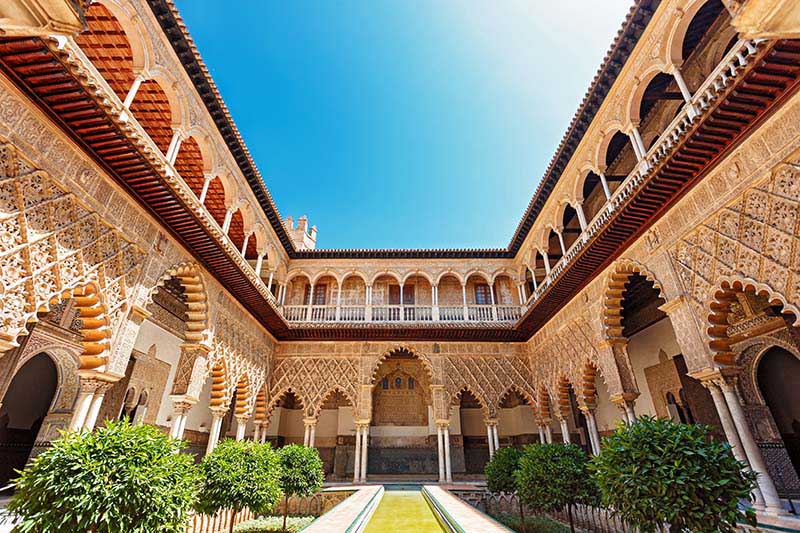Seville, Spain – Travel Tips
Category
Categories
Popular Articles

**Overview of the Destination: Seville, Spain**
Seville, located in Spain’s southern region known as Andalusia, is one of Europe’s most captivating cities. Rich in history, bursting with vibrant culture, and boasting some of the continent’s most impressive architecture, Seville is a favored destination for travelers. Famous for its flamenco, mouth-watering tapas, and stunning sights like the Real Alcázar and the colossal cathedral, Seville manages to perfectly blend its medieval past with a bustling contemporary life, resulting in a city unforgettably charming.
**Best Time to Visit**
The ideal time to visit Seville is from March to June, when the weather is pleasantly warm, and the city is beautifully adorned with blooming flowers. The Semana Santa (Holy Week) and Feria de Abril (Seville Fair) occurring during April are also significant drawcards. However, be aware that summer (July and August) can be unbearably hot, with temperatures soaring into the 100s. The winter season (December to February) is chilly but less crowded, offering discounted accommodations.
**Climate & What to Pack**
Seville experiences hot, dry summers and mild winters. Carry light, breathable clothing, comfortable shoes (for all the walking around the cobblestone streets), a wide-brimmed hat, and an ample amount of sunblock for the summer months. For winter visits, bring sweaters and a heavy jacket. A collapsible umbrella may also come in handy during the occasional winter showers.
**Getting There**
Seville’s main international gateway is San Pablo Airport, located 10 km east of the city. From the airport, the EA airport bus will take you to the city center. Trains from Madrid, Barcelona, and other Spanish cities arrive at the Santa Justa train station. American, Canadian, EU, and Australian tourists do not need visas for stays of up to 90 days.
**Getting Around Locally**
Seville is best explored on foot, thanks to its compact, pedestrian-friendly city center. The city also has an efficient bus network, a metro line, and a tram network for longer distances. Taxis are readily available, and Uber operates in Seville. Bikes and electric scooters are popular, with several rental options available.
**Safety Tips**
Seville is generally very safe for tourists. However, pickpocketing can be a concern in crowded areas and on public transport. Be careful about your belongings, especially around the city’s major tourist spots. Solo travelers and women can feel comfortable exploring the city, even at night. Spanish people are friendly and helpful, but appreciating their local customs and not eating late at night can further ease your experience.
**Top Things to Do & See**
Your visit to Seville won’t be complete without a tour of its UNESCO World Heritage Sites, like the Real Alcazar and the Seville Cathedral. Don’t miss the chance to witness the passionate flamenco dance up close in the Flamenco Dance Museum or the local bars. Take a stroll along the Guadalquivir River, explore the majestic Plaza de España, and lose yourself in the winding, narrow streets of the charming Santa Cruz neighborhood. For more adventurous souls, a kayak trip on the river offers wonderful city views.
**Where to Stay**
Seville offers a range of lodging options to suit every kind of budget. Luxury travelers can splurge on high-end properties in the city center like Hotel Alfonso XIII. Mid-range options with comfort and character include the Casas de la Juderia. Budget travelers will find great value in hostels around the Macarena and La Alameda areas.
**Food & Local Cuisine**
Tapas are an essential part of Sevillian and Andalusian culture. Try traditional dishes like salmorejo, secreto ibérico, and espinacas con garbanzos. For sweets, don’t miss out on the torrijas or pastries. Seville has abundant dining options, from upscale restaurants to humble tapas bars.
**Cultural & Practical Tips**
Spain uses the Euro, and Spanish is the official language, though English is widely understood in the city center. Tipping around 5-10% is customary at restaurants. Electricity is supplied at 220 volts and uses type C or type F plugs, so bring an adaptor if needed. Free Wi-Fi is usually available at hotels, cafes, and some public areas.
**Sustainable or Responsible Travel Tips**
Seville is a walkable city, so reduce your carbon footprint by exploring on foot or hiring a bike. Respect local customs and traditions, especially during religious festivals. Also, strive to support local businesses when shopping for souvenirs.
Finally, my personal travel tip for first-time visitors: Seville is more than its famous sights. Be sure to take out some time to simply wander around the city’s cobbled lanes, relax at a local café, and just soak in its lively and infectious energy. Your heart will leave a piece of itself in Seville. Enjoy your journey!










